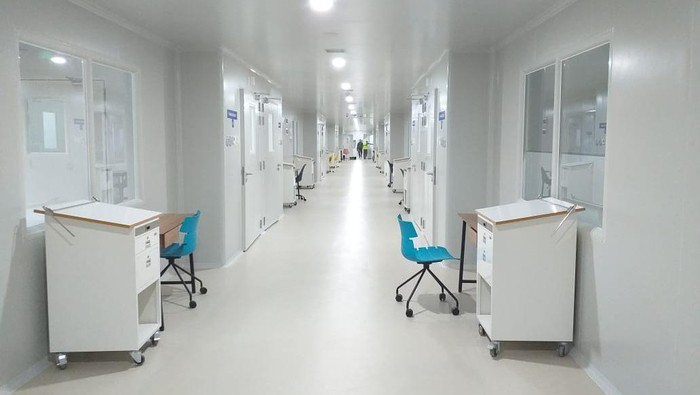President Joko Widodo announced two confirmed Indonesians being infected with the Covid-19 virus in March 2020. Since it was announced, Covid-19 cases have increased to reach three hundred thousand cases in Indonesia in October 2020. It makes hospitals full of Covid-19 patients and suspects.
Like what happened at the Infectious Diseases Hospital (RSPI) in Sunter Jakarta North, from the total 11 isolation rooms at RSPI, 10 isolation rooms have been filled by patients Covid-19. Therefore, Covid-19 patients have to be referred to other hospitals in certain locations to get treatment. An effective way is needed to regulate the frequency of doctor and patient transfers to minimize the total cost of moving.
Hospital layout design problems concerning the frequency of movement of doctors and patients (other examples: visitors and medicines) are included in the quadratic assignment problem with two objective functions or commonly referred to as the Bi-objective Quadratic Assignment Problem (Bi-Objective QAP). Indeed, a suitable layout will minimize the total cost of moving.
In this study, a metaheuristic algorithm was used to solve the bi-objective quadratic assignment problem, namely the Squirrel Search Algorithm, by considering the influence of the predatory presence probability parameter. The Squirrel Search Algorithm, commonly known as the Squirrel Search Algorithm (SSA), is developed by Mohit Jain in 2018. SSA is an algorithm that is inspired by nature based on the behavior of flying squirrels. The algorithm not only makes mathematical formulations on squirrel behavior but also foraging behavior. The process of foraging behavior was repeatedly observed in four climatic conditions: warm weather, pre-winter, winter, and late winter.
In the foraging cycle, predators may be present to interfere. The probability of the presence of a predator is expressed in terms of the probability that there are two conditions that can occur as a result of the presence of the predator. When predators come, flying squirrels will glide around better locations than other flying squirrels. Another possibility is that the flying squirrels will glide at random.
In this algorithm, it is assumed that a flying squirrel is in a tree where there are a number of flying squirrels that are hunting for food sources in the forest; each flying squirrel forages individually and optimizes dynamic foraging behavior; There are three types of trees available in the forest, namely: normal trees; acorn tree, and hickory tree; The forest area has three acorn trees and one hickory tree. The Squirrel Search Algorithm (SSA) creates mathematical formulations of food search and foraging behavior. SSA provides a global optimal solution that is accurate and consistent compared to other algorithms such as Genetic Algorithm, particle swarm optimization, bat algorithm, firefly algorithm, krill herd algorithm, and multi-verse optimizer.
The program implementation for the bi-Quadratic Assignment Problem case example uses assignment data at 10 facilities and 10 locations, 20 facilities and 20 locations, as well as 30 facilities and 30 locations. For each type of data, 10 runs the program is carried out and a solution that provides a minimum cost of movement is selected. Based on the results of the running program experiment, it is found that the parameter values of the probability of predators, the number of iterations, and the number of flying squirrels affect the performance of the Squirrel Search Algorithm (SSA). The greater the maximum number of iterations and the number of flying squirrels, the greater the possibility of finding the best solution because the area for finding a solution is also larger, while for the probability of predators being, the smaller the parameter value, the wider the area for finding the solution so that the value of the objective function obtained is better.
Based on this study, the problem of hospital layout to minimize the cost of moving doctors and patients between hospitals can be minimized if the hospital is in the right location. There are two objectives in this problem: minimizing the total cost of moving doctors, and the second is minimizing the cost of moving patients. Hospitals that are close to other hospitals will be placed in a nearby location. A suitable layout will minimize displacement costs.
Author: Asri Bekti Pratiwi
Details of the paper can be viewed here:





